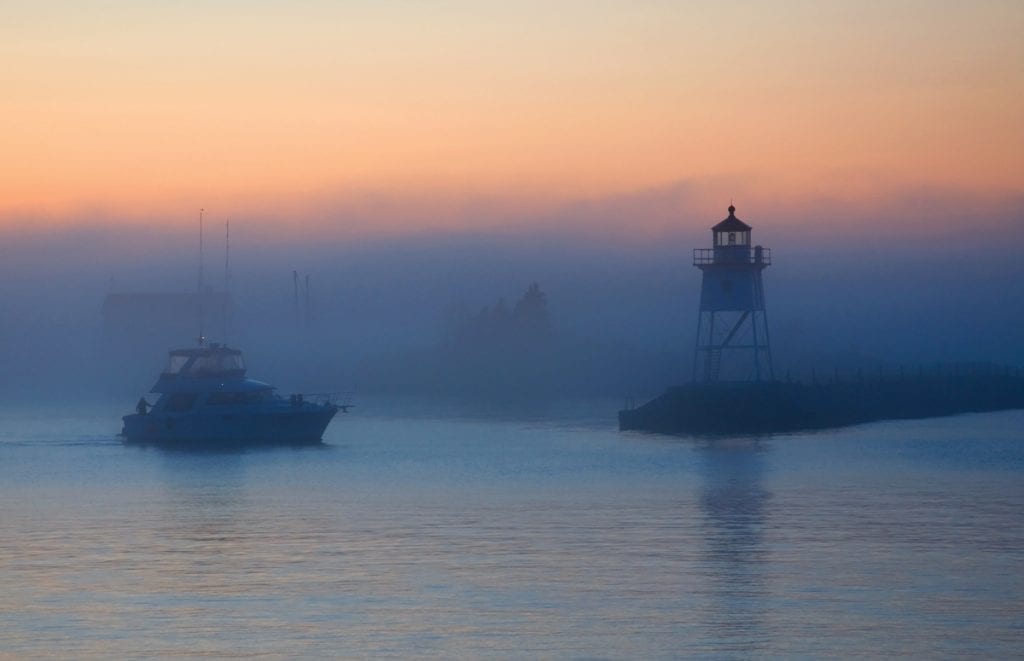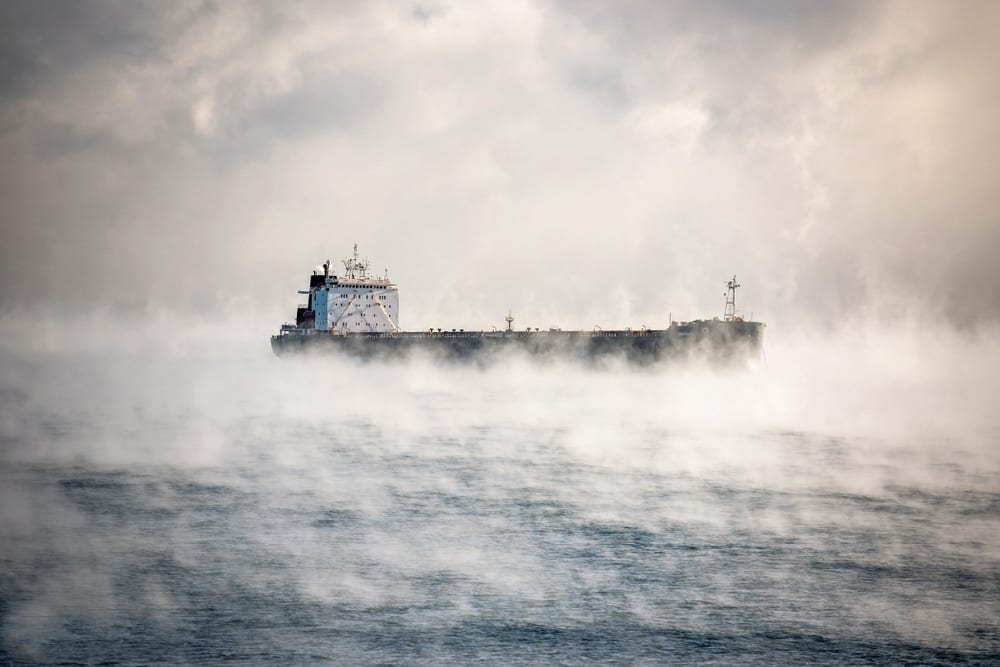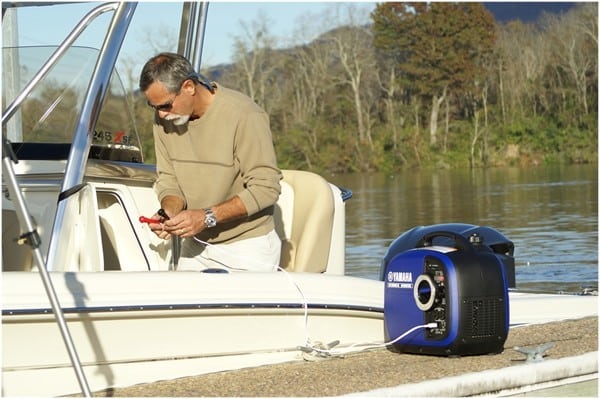Types of Fog
Did you know that there are many different types of fog?
Fog can certainly spoil an otherwise perfect day on the water but even more important, it can be dangerous. Fog reduces your visibility, sometimes to near zero. Navigating without visual clues is difficult at best, and collisions with other vessels become a real possibility. If you’re close to shore, running aground is a risk.
Fog is defined as a cloud that touches the earth’s surface. If you’ve flown on an airplane through a cloud, it looks like fog outside your window. What you’re looking at are condensed water droplets—ice crystals if it’s very cold. The moisture that’s always present in the air (water vapor) has condensed, typically on microscopic particles in the air, but the droplets are so small and light that they are supported by air currents and do not fall to the ground.
The air can only “hold” so much water vapor (the gaseous form). The dew point number you often hear meteorologists refer to represents this and is the temperature air must cool to produce saturation (when the relative humidity is 100 percent). Cooler air can’t hold as much water vapor, so when cooled further, condensation (the liquid form) forms and produces some type of fog or cloud. You can also get the same effect by adding moisture to the air, which effectively increases the air’s dew point and relative humidity. Fog can form in a variety of situations and has different names depending on the circumstances.
Sea fog
One of the types of fog boaters must often deal with sea fog, which occurs when relatively warmer air passes over a cooler water surface. The air is cooled from below and if the dew point is reached, fog forms. San Francisco is a great example of this because of the cold current off shore.
In the southeast U.S., winter and early spring are prime times for sea fog to form over coastal waters. The shallow waters near the coast are cooled by the occasional cold outbreaks from the north. The deeper waters of the central Gulf and of the Gulf Stream in the Atlantic remain warm. The air above them is very warm and moist. If the wind direction is such to move this air toward the coast (south or west in the Gulf, east in the Atlantic), it is a perfect situation for sea fog to form. However, if the wind is too strong (above 10 mph), mixing would dissipate any fog. If not, the fog can continue until the wind changes direction.
Steam fog
Sometimes in the winter, when extremely cold air moves over relatively warmer water, steam fog (aka sea smoke) forms. Water vapor evaporating from the water surface quickly condenses into streamers of fog in the cold air. Steam fog typically isn’t as deep or persistent as sea fog.
Frontal fog
Also in the winter, fog can develop with fronts, particularly warm fronts. This “frontal fog” occurs north of the surface warm front in the cold air. Frontal fog is widespread (it can cover hundreds of miles) and can occur over land or water. It will not “burn off” during the day and only moves out when the front itself moves.
Ground fog
Usually not a problem for boaters, ground fog can be an annoyance for those living or visiting the coastal areas. Ground fog forms over land at night. On clear, calm nights, the ground surface radiates heat out into space and quickly cools. The ground cools the lowest layer of air from below, cools the air to its dew point, and fog is formed. This type of fog typically “burns off” later in the morning as the sun warms the ground. Also keep in mind that whenever there is precipitation, some fog will form. Additional moisture and cooling from falling rain or snow can make the air saturated. The fog and the precipitation itself can limit visibility.
Fog advisory
It is always prudent to check the latest marine weather forecast before heading out in your boat. A “Dense Fog Advisory” means you may run into areas of fog that can reduce visibility to one nautical mile or less. As for equipment, make sure you have a way to check the latest weather conditions and forecast. For navigation, GPS or nautical
charts can help determine your exact location and course when visible cues aren’t distinguishable. A compass will help you plot a heading. Shipboard radar is certainly useful in seeing other vessels, but keep in mind that even weather radar can’t detect fog. Make sure your navigation/running lights are working. They must be turned on when visibility is restricted by fog.
In addition, all vessels must be equipped with sound-making devices or equipment. For vessels larger than 39.4 feet (12 meters), this must be a sound signaling appliance capable of producing an efficient sound signal that’s audible for a mile with a 4- to 6-second duration. Smaller boats can use whistles or horns. Once you’re on the water, keep track of the weather because fog can form quickly over water. Also, a change in wind direction can bring an existing fog bank into your path.
If you encounter fog, don’t panic. Just follow some basic rules. First, slow down. Turn on your running lights even if it’s daytime. Start making sounds with the appropriate equipment. Listen for sounds from other boats. If your boat is equipped with radar, check it often for other vessels or obstacles. Use passengers as lookouts, particularly at the bow, especially on larger boats.
Underwater hazards like sandbars or reefs also pose a risk, more so if you’re running close to the shore. Determine your location and heading. If you are lost, stop and drop anchor, but continue to produce clearly audible sounds. In time, the fog should lift or move out.
By Ed Brotak, Southern Boating
February 2019















